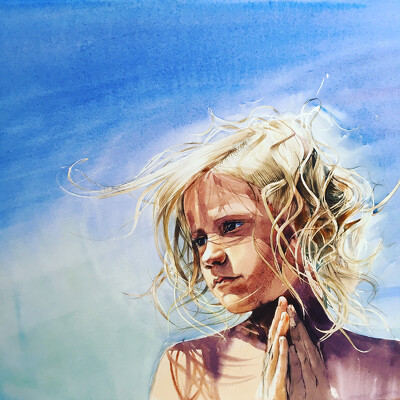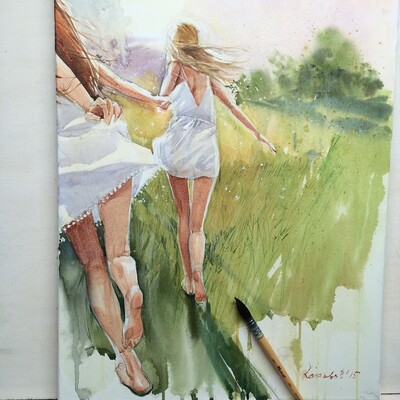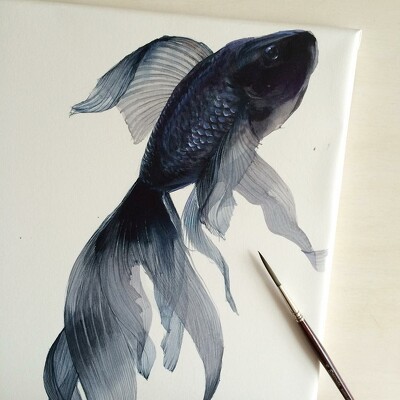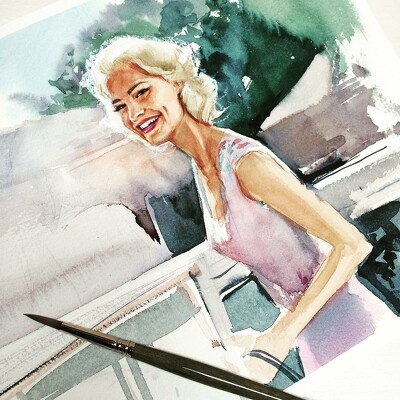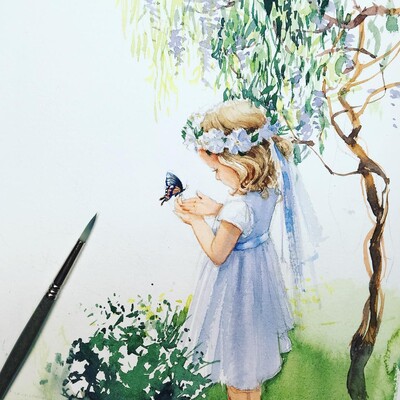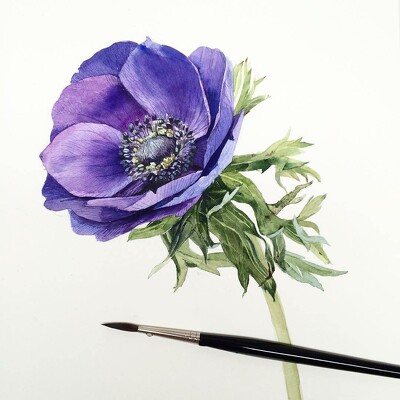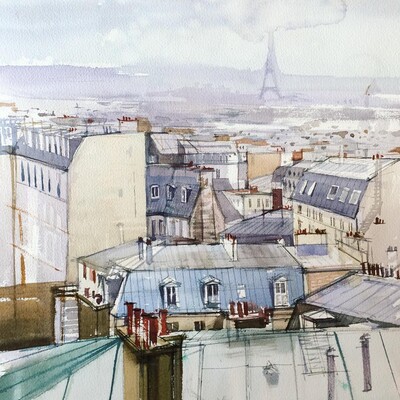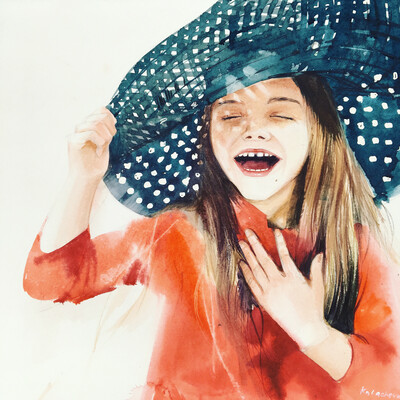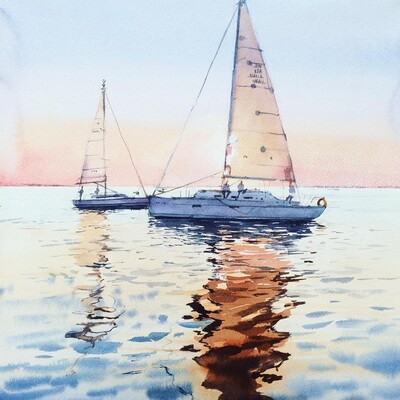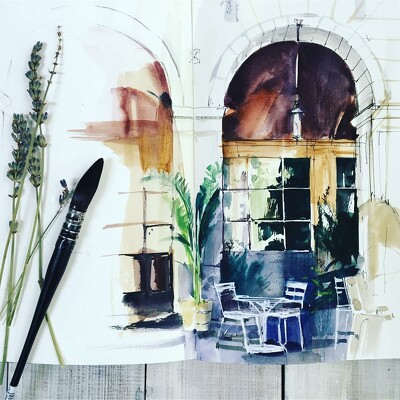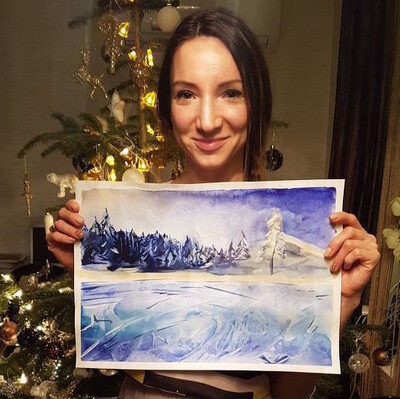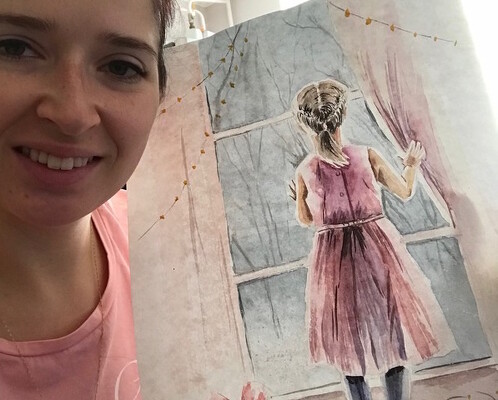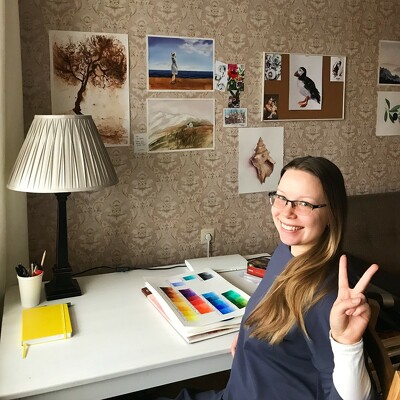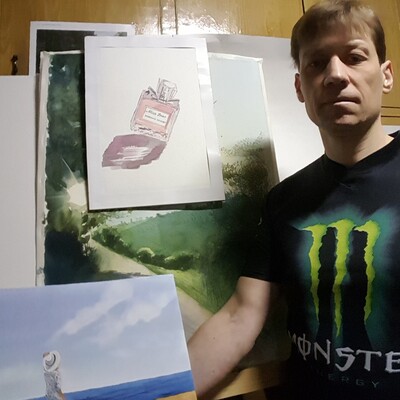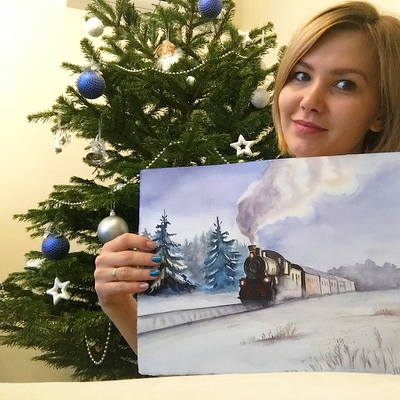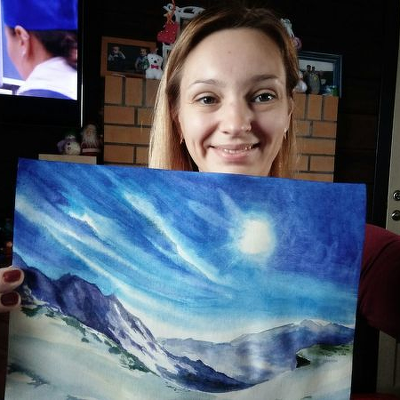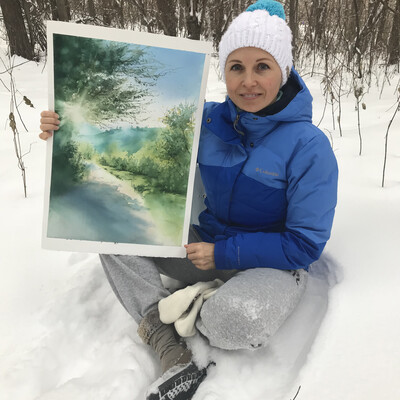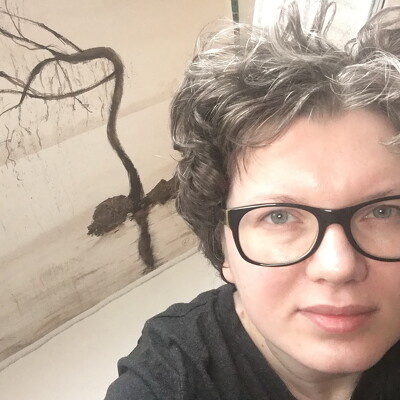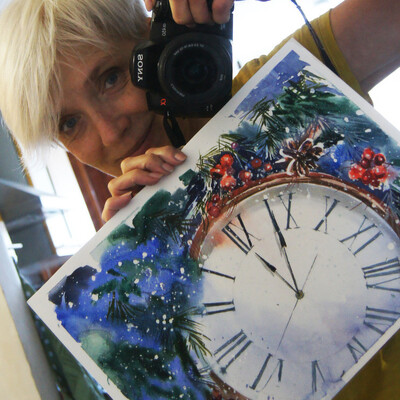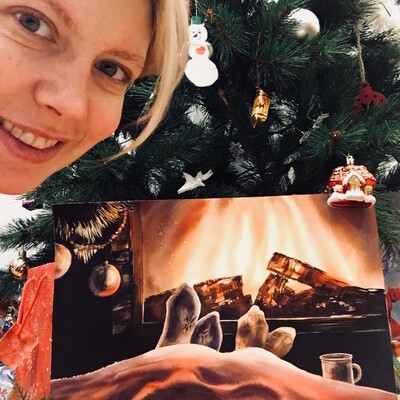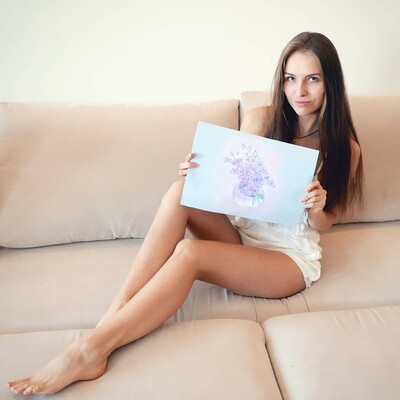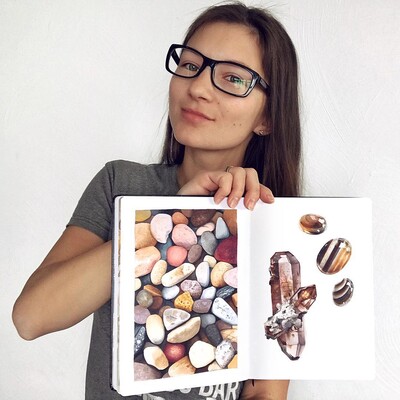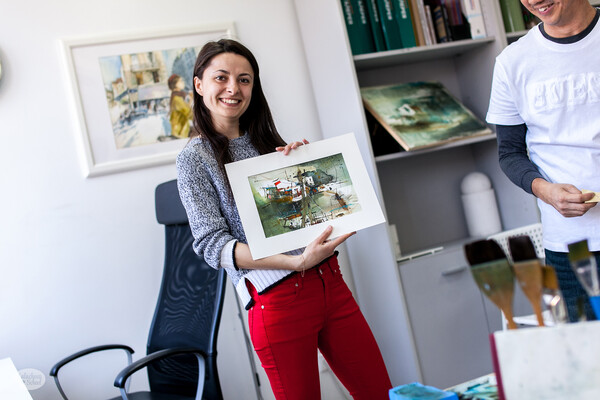Online Watercolour Course is a 6-week long program of learning watercolour techniques: 60 video lessons designed for beginners. The course is developed by watercolour professionals and e-learning methodologists. More than 30 000 people around the world have already taken this Course.
Briefly about the course:
It is designed in a way that you do not just copy a suggested picture, but you develop deep understanding of techniques and methods of working with watercolour. All you have to do is watch a video, follow teacher's instructions, take a photo of your work and upload it to the website.

I have been teaching for more than 15 years and know that almost all students are not comfortable working with watercolour (as well as with other art media). Lessons in art studios are chaotic and unsystematic, usually theory is boring and not arranged methodically, plus there is never enough time for feedback and corrections. That's why students start searching for information in books, unprofessional video clips and even consider spending money on private lessons (but all of these, of course, provide little benefit).
At “Art Talents” we created, perhaps, the best online tutorials for learning watercolour techniques (the main proof is hundreds of satisfied students around the world)!
Veronika Kalacheva
Watercolor artist,
the author of the online course
What makes our Watercolour Course so effective

Proven methodology
We start from the very beginning- we analyse drawing materials, practice mixing colours, start with simpler exercises and proceed with more complicated ones, improving our skills and gaining more confidence. Each following assignment is focused on practicing the skills and knowledge obtained in the previous lesson. The online format of the course gives you enough time to complete the task and correct the mistakes you might make.

Learn at your own pace
Each student is unique: if you prefer studying in the evening - please, study in evening. If you have time only on weekends - study on weekends. No need to rush through the assignments trying to catch up with the whole group, if you haven’t had a chance to spend enough time learning subjects covered in the previous lesson. If you’re a fast-paced learner there are bonus tutorials available to help you improve your skills faster.

Peer support
The fear of making mistakes and the fear of a blank canvas sometimes don’t let beginners relax and enjoy the creative process. During the course, all students will be able to see each other's work, successes and mistakes. This will help you to avoid your own mistakes, giving you a great chance to improve your own work.

Unique online learning system
This is neither a live webinar nor an online broadcasting. Video lessons are available to you 24/7 and you can watch them as many times as you need. It gives you an opportunity to practice more and play specific segments of the lesson that were not clear at first. This would have been impossible in an standard class or workshop setting.
Teaching methods
This course is organized on a "simple-to-complex" basis. That's why even if you have never held a brush in your hand before you will learn to draw as if you have been practising it for several years.
I. art supplies
- Composition of paints. Pigments and their properties
- Watercolour palettes
- Required basic set of brushes
- Squirrel brush :basic techniques
- Flat Brushes, calligraphic brushes
- Fan brush, angular and special brushes
- Brushes with elongated pile
- Testing watercolour brushes
- Browsing types of paper and testing them
- Blocks, pads, rolls and sheets
- How to choose the right paper
- How to stretch watercolour paper on a frame
You will learn everything about drawing materials, what purposes do they serve and what properties are important
II. Watercolour exercises
- Workplace Preparation
- Colour chart
- Transparency and opacity test
- Staining and non-staining test
- Wash Technique
- Filling shapes and figures with paint
- Drawing ice cream by using wash technique
- Opacity of the paint. Flower
- Blot-flowers
- Examples of application of watercolour spots
- Bird. Wash technique
- Secrets of the brush
- Drawing textures. Wood
You will learn basic watercolour techniques and will prepare for advanced level drawing
III. Coloristics and color theory
- Lightness scale, Vision Tone excercise
- Mountains in the fog
- Venice. Grisaille
- Still life. Basics of perspective.
- A cheeky sketch. Carrot
- Theory of color by Itten, six-coloured circle
- Mixing of warm and cold primary colours
- Creating our own palette, colour matching exercise
- Color Density, practical excercise
- 3D tomato, working with shapes and forms
You will learn how to add volume, reflections and hue to your paintings.
IV.Extended information
- Breakdown of main watercolour techniques
- Shapes and watercolour. Mill and a city
- Working with a fine brush. Chandelier
- Color Scheme
- The Luxembourg Gardens, full-color landscape
- The concept of positive and negative space
- Working with negative and positive space
- Masking fluid
- Girl and the sea, working with negative spaces
You will be able to work with watercolour as a professional with a long experience.
V. Combining techniques
- Black olives, basics of botanical illustration
- Autumn landscape with accents
- Flower market, drawing still life
- Sunny road. Aerial perspective and illusion of light
- Final assignment.
You will practice applying and combining all the techniques that we have learnt during this course.
VI. Bonus lessons
- Composition with glass objects
- Key. Imitating wooden and metal textures
- Dandelion. Working with masking fluid and talking about a limited palette
- Minimalist landscape with a tree
We will show you the ways to develop your skills further and how to make progress in your future art practicing
Feedback and recommendations povided by teachers
Throughout the course a supervising watercolour teacher will be assigned to you. They will check your submited work (there will be more than 30 assignments in total).
No more e-mails and complex interactions: just take a picture of your work, post it on the course web page and get feedback from a teacher.
The teacher will describe your work, record audio comments and point out your mistakes directly on the photo of your work.

Students’ works
These and many other art works were created by our students who enrolled in our online course without having any prior experience in drawing. They successfully completed the Online Course and mastered working with watercolour. You can do it too!
Program
We invite you to see yourself how detailed our classes are! Almost every lesson contains an assignment and the stars in the title indicate if extra time might be required to complete it.
What you will learn in this course
1. How to choose the materials: types of brushes, paint
brands, paper, colour palettes;
2. How to create beautiful washes while exploring the proper
use of water-to-paint ratio;
3. How to use different tricks like a pro - working with saturation, tone and color;
4. How to put your theoretical knowledge acquired during this course into practice;
5. How to make even the simplest drawings look exciting and
fresh;
6. The relation between a state of paper and drawing technique;
7. How to create watercolour splashes, spots and streaks on purpose not by accident;
8. How turn your art ideas into reality!
Course author and instructor
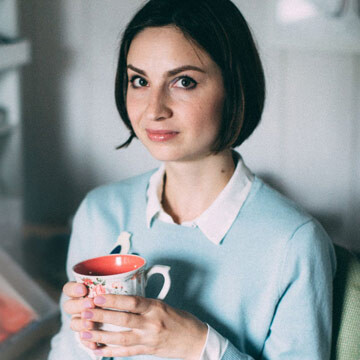
Veronika Kalacheva - the author of the online course
Illustrator, watercolour artist
In 2004 Veronika received Honorary Bachelors of Art Graphics at State Art University. After graduating she worked as a commercial illustrator. Nowadays Veronika creates illustrations for books, magazines as well as cooperates with famous publishing houses. Since 2013 she has been focusing on leading online training courses.
Veronika's works
Our students
Features of online learning
- During the course all submitted assignments will be visible to other students.
You will see all the mistakes. This will help you avoid your own mistakes, giving you a great chance to improve your own skills.
- You can make as many corrections as you wish.
Unlike traditional art classes and workshops during an online course you can make several corrections, redo or improve the assignment as many times as needed. - The online-course gives you a lot more practice and time.
You learn and practice any time that works best for you while the course lasts.






































